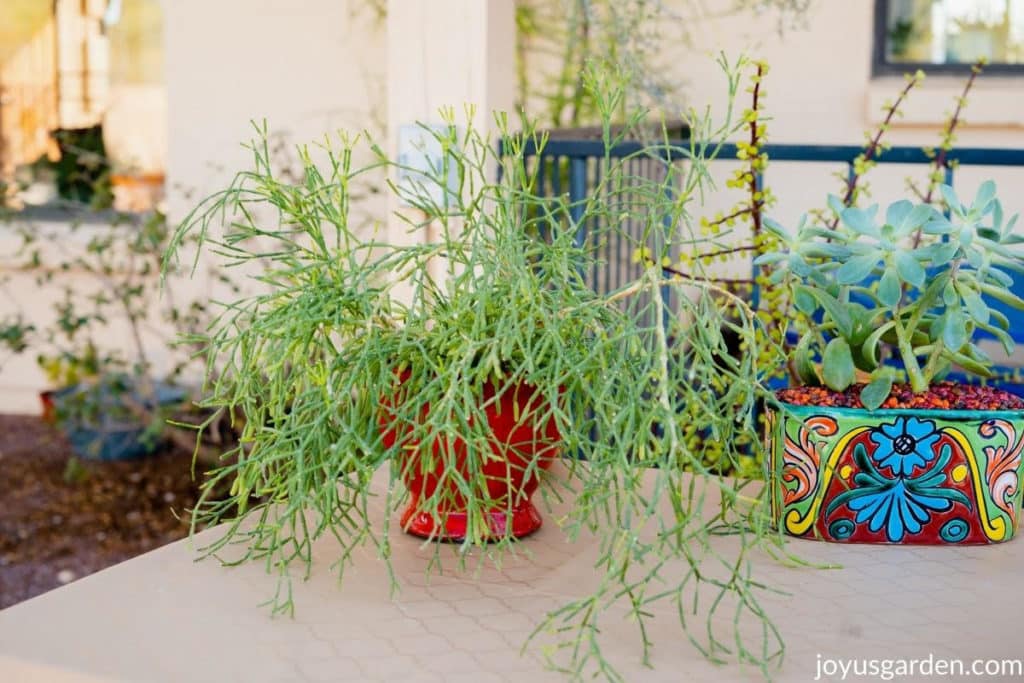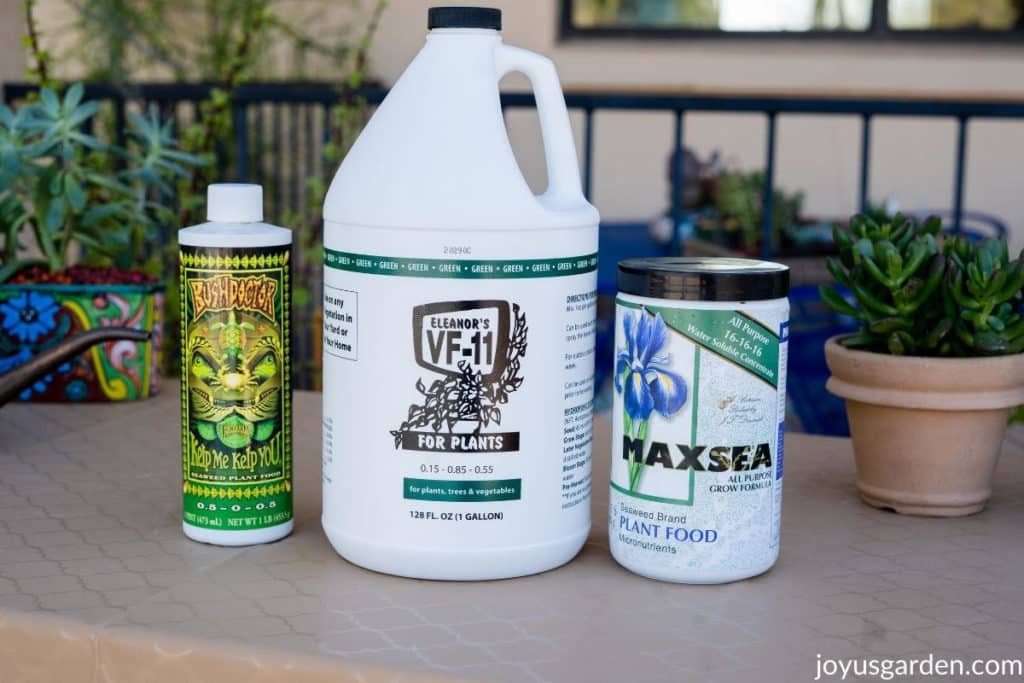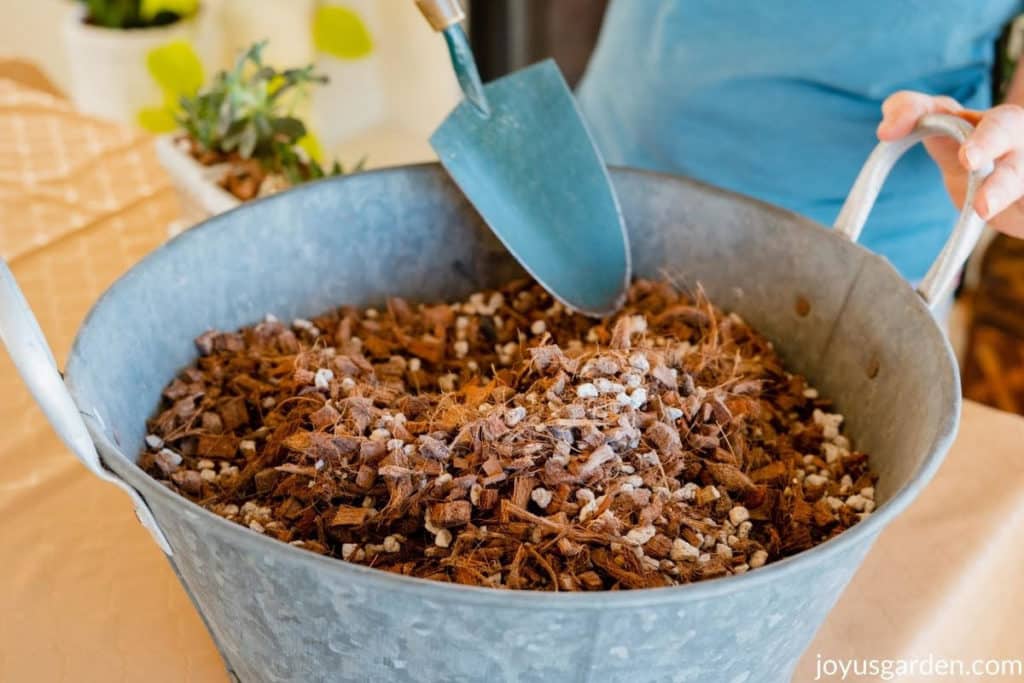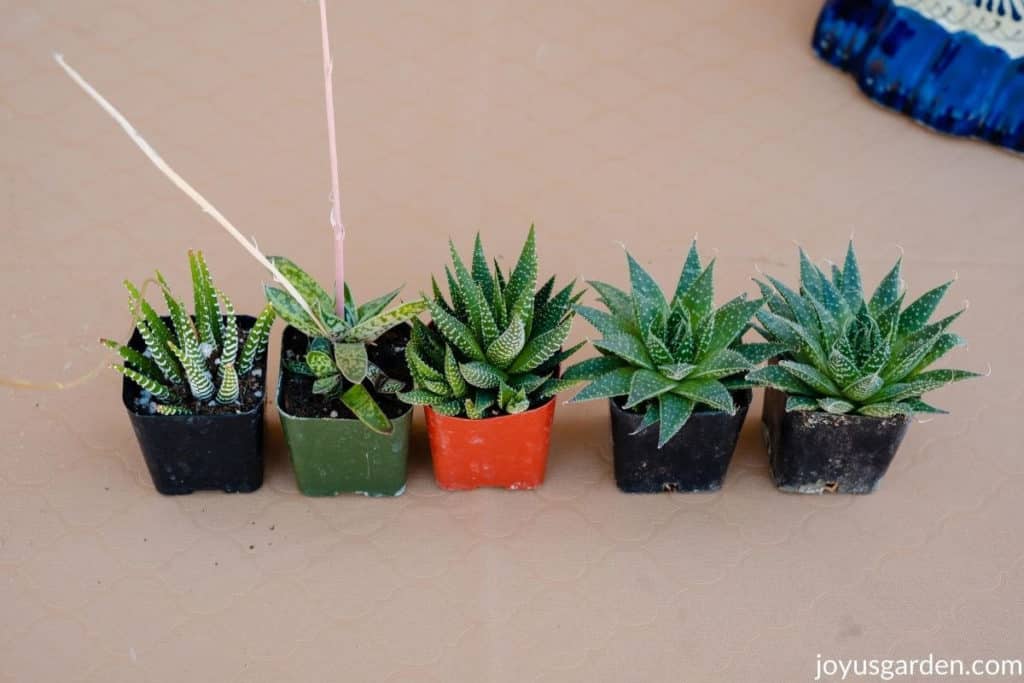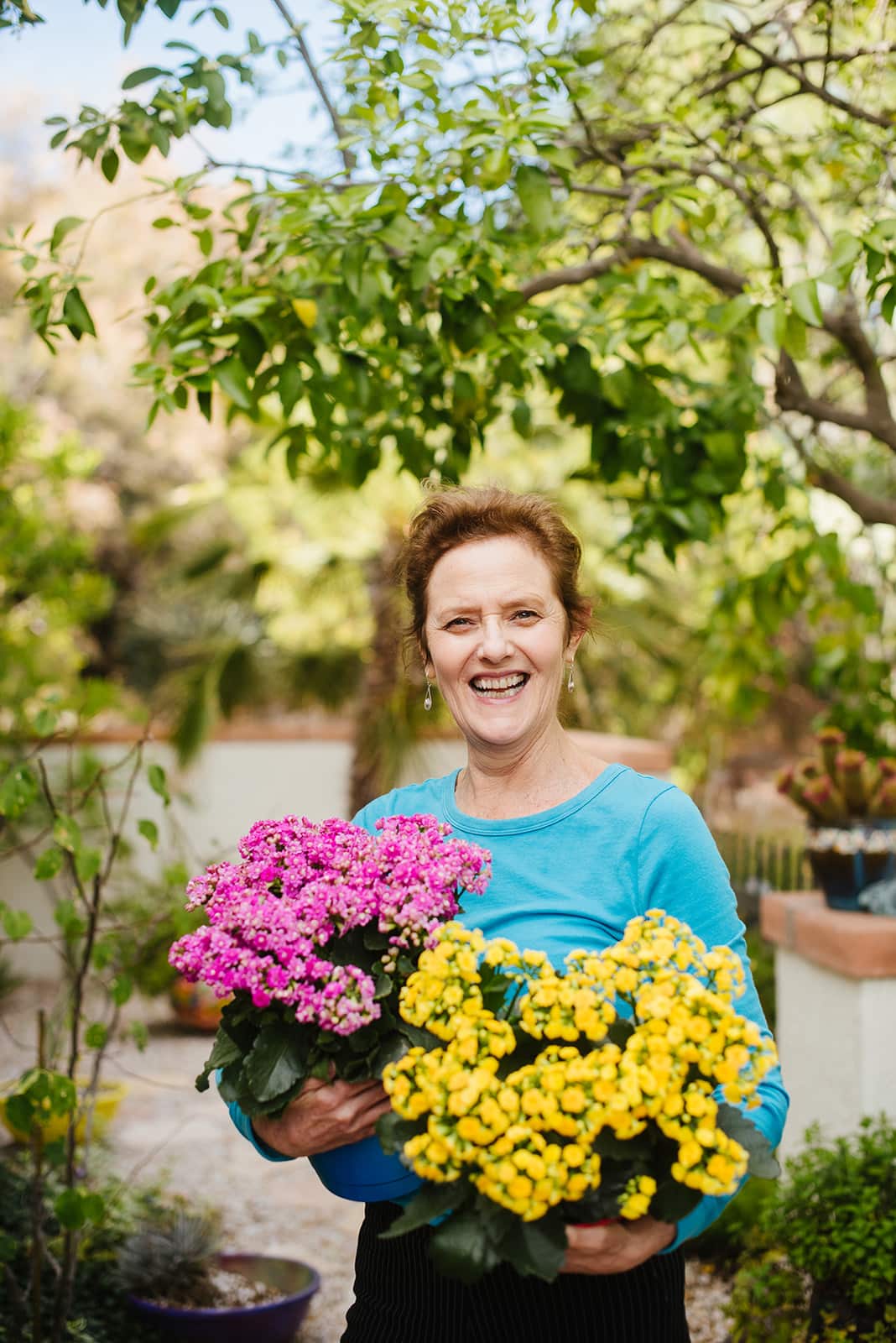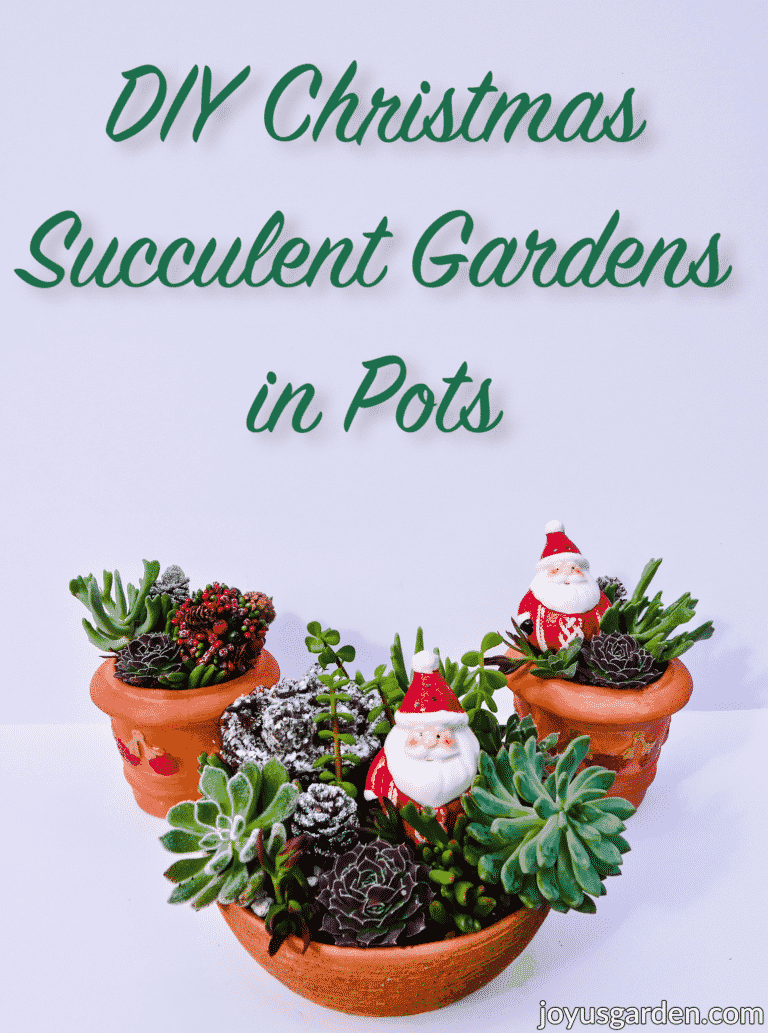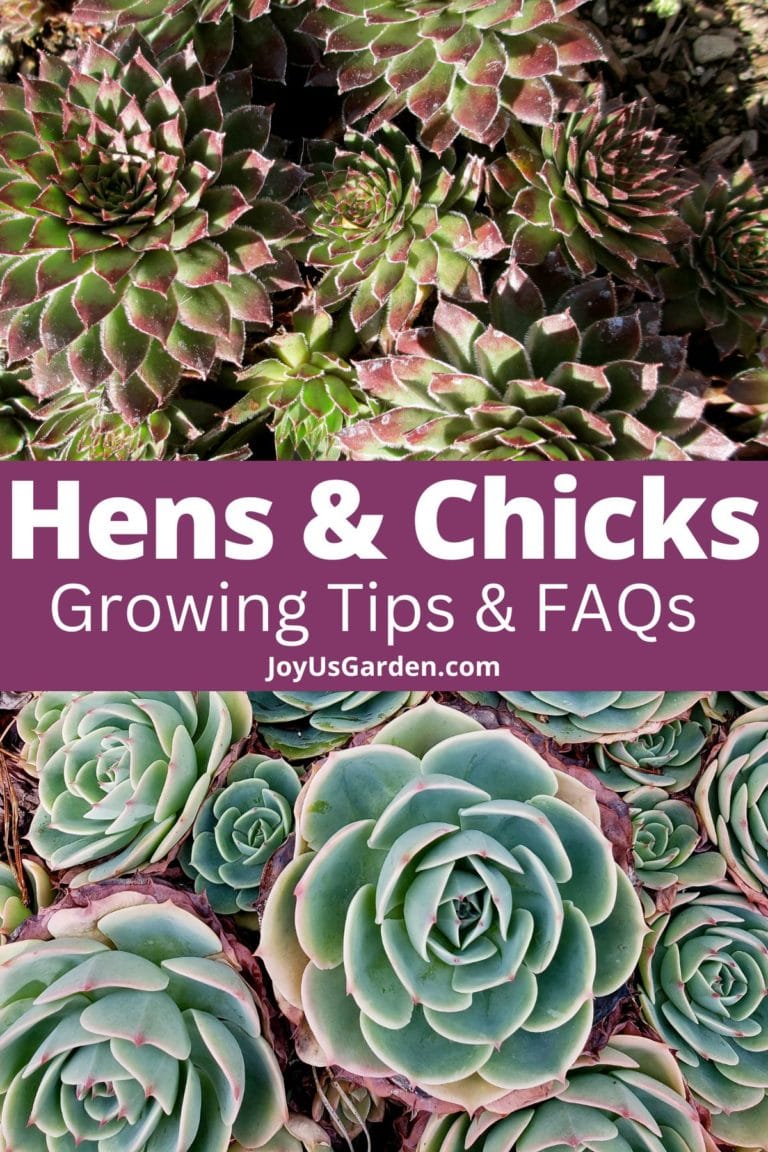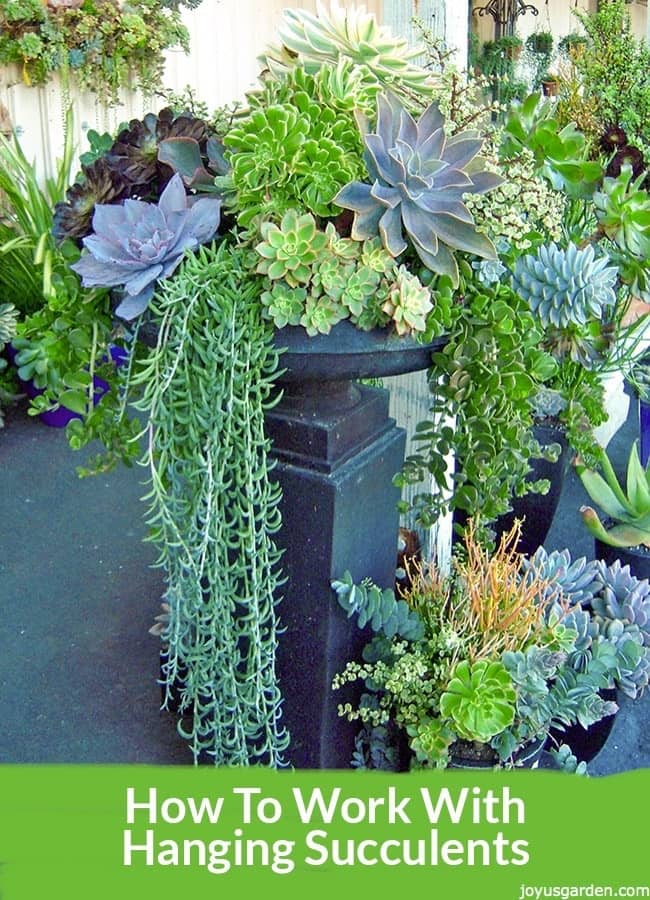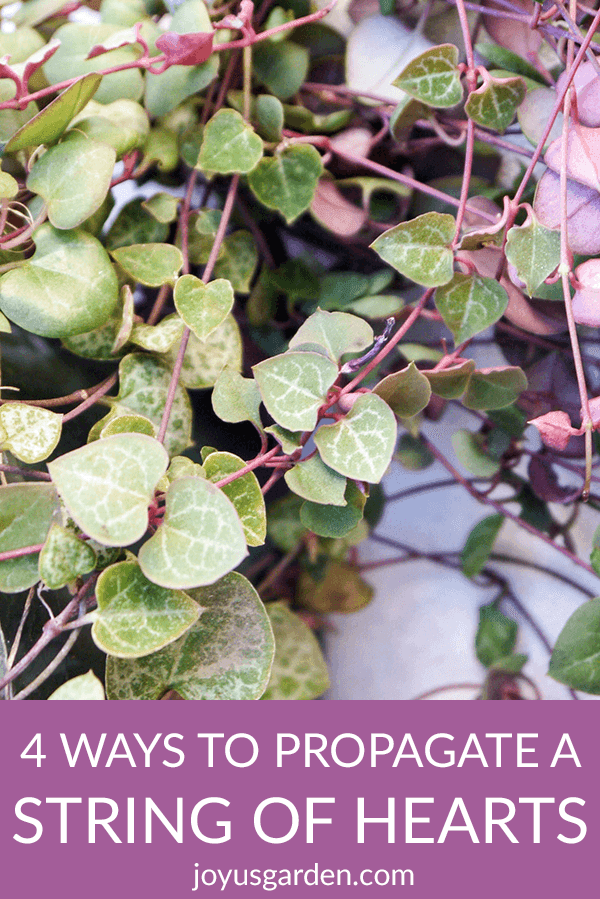Succulent Plants Indoors: 6 Important Care Tips
There are many fun and wacky succulents to choose from and grow as houseplants. Most do well in small containers making them ideal for small spaces. Here are 6 important things to know about growing succulent plants indoors.
Succulents are easy to grow indoors if the conditions are to their liking. These are not problems you may have growing succulents; that’s coming up in the next week’s post.
Indoor succulent gardening for beginners:
6 important things to know about growing succulent plants indoors
This is a short list of care tips to help you care for your indoor succulents. By the way, the first two points are the most important!
1) Light
How much sun do succulents need? The short answer: bright light, preferably natural. I’ve never grown them (or any of my houseplants) with a grow light so I can’t give any information on that subject.
In moderate to high light levels succulents will do their best. They prefer around 6 hours of natural light near but not in a west or south-facing window. I live in Tucson, AZ which is one of the sunniest cities in the US so my succulents also grow in an east exposure.
It’s good to know that their fleshy leaves will sunburn up against hot glass or if they’re in too much direct sun. Full sun exposure is fine, just as long as they’re at least 5′ away from the windows.
Some succulent plants will tolerate lower light conditions but will look better and grow faster with more light. A bathroom with no natural light wouldn’t be suitable if you want to grow yours for the long haul.
Just know that you may have to move your succulents to a more favorable location depending on the season. If you live in a climate with snowy and/or cloudy winters, yours may have to go to a brighter location for those darker winter months.
If succulents aren’t getting enough sunlight, they’ll stretch and become leggy, thin, and sometimes pale.
My new home has lots of windows and is filled with light that both my succulents and other houseplants love. I move mine growing on south window sills to an east-facing exposure (bright, indirect light) during the 4 intensely hot and sunny months to avoid burn.
More on natural light for houseplants as well as supplemental lighting for indoor plants.
2) Watering
There’s a post and video dedicated to Watering Succulents Indoors so I won’t go into much detail here.
In a nutshell: Succulents prefer less water over too much water. They like dry conditions. Their fleshy leaves, stems, and roots store water and can easily rot out. I let the soil dry out in between waterings.
If you’re interested in how to water succulent plants in pots with no drainage hole, I’ll be doing a post on that coming up in a few weeks.
3) Fertilizer / Feeding
What is the best fertilizer for succulents? Who knows! People seem to have their favorites and so do I. Succulents don’t require too much feeding, so whatever you use, easy does it.
I top all my succulent plants indoors with a fine layer of worm compost and compost in early spring. This is also how I feed my other houseplants and you can read more on that here.
I fertilize mine with liquid kelp, Eleanor’s VF-11, or Maxsea (not mixed all together; separately) a couple of times a year in the late spring/summer. I use whichever at 1/2 strength (if it calls for 1 teaspoon/gallon, I use 1/2 teaspoon/gallon) so I don’t overdo it.
I’ve also used fish emulsion or a fish and kelp blend in the past. The plants seem to like everything I’ve used so I don’t have a favorite. It’s clear those “sea fertilizers” have an edge in my home!
There are fertilizers formulated specifically for succulents and cactus on the market, but I also like to use those that my tropical houseplants will benefit from.
Whatever you use, an application once or twice a year will be fine. Apply in spring and then maybe once again in mid-summer.
4) Soil
There are many different succulent soil mixes available to buy as well as DIY recipes. Chunk in the mix is what you want – like small pebbles, pumice, coco chips, or coarse sand. It ensures good drainage plus aeration for the roots, especially for succulent plants indoors.
Regular potting soil is usually too heavy and holds too much water. Less aeration = more chances of root rot. It’s much easier to overwater a succulent in potting soil. If you only have 1 or 2 small succulents and don’t want to buy and/or store succulent and cactus mix, then you can add pebbles or pumice to your potting soil to lighten it up. Just be mindful of the watering.
This is the recipe for Succulent and Cactus Mix that I use on the regular and have for around 2 years now. I always have a batch of it made up because I have lots of succulents and cacti both indoors and outdoors.
I have a post and video dedicated to succulent soil coming up in about a month or so. In the meantime, here are a few commercial succulent and cactus mixes which are popular: Bonsai Jack, Superfly Bonsai, Cactus Cult, and Hoffman’s that can be bought in smaller bags.
5) Repotting
You won’t need to repot your succulents very often because they can grow slightly tight in their pots just fine. If yours are looking stressed or are way too big for their pots, then, of course, repot.
Succulents don’t need repotting on a regular basis. I usually do it every 5 years to so just to freshen up the soil mix or as they’re growing taller or clumping and spreading.
If you need to do it, just know that succulents are usually very easy to repot. A Christmas Cactus, Panda Plant, or Jade Plant are easier than a Burro’s Tail (the leaves easily fall off) or a String of Pearls (the stems are thin and delicate).
Yes, I do have a post and videos coming up about repotting succulents very soon.
6. Choice matters
This really isn’t a care tip but it sure can make things easier when it comes to keeping your succulents alive. I try different succulents indoors because they’re abundant and cheap for me to buy here in Tucson. As I said, I have lots of light in my home so my succulents are happy as can be.
To be certain you get succulents that survive and don’t empty your wallet, then get those more suited for lower light. There are “tried and true” ones for growing indoors which I cover in Choosing Succulent Plants and Pots.
Growing succulent plants indoors mainly comes down to light exposure and watering. Give one or two a try, you’ll be hooked on them in no time!
Want to learn more about How to Care for Succulents Indoors? Check out these guides!
Happy gardening,

This post may contain affiliate links, you can read our policies here.
- About the Author
- Latest Posts
Nell, the founder of Joy Us garden, was born into a gardening family and grew up in Connecticut’s countryside. After living in Boston, New York, San Francisco, & Santa Barbara, she now calls the Arizona desert home. She studied horticulture & garden design, working in the field all her life. Nell is a gardener, designer, blogger, Youtube creator, & author. She’s been gardening for a very long time & wants to share what she’s learned with you.
